If you call the function
highlight(employee);
this is what that function would look like in ECMAScript 2018+:
function highlight(employee){
Array.from(document.querySelectorAll("body, body *:not(script):not(style):not(noscript)"))
.flatMap(({childNodes}) => [...childNodes])
.filter(({nodeType, textContent}) => nodeType === document.TEXT_NODE && textContent.includes(employee))
.forEach((textNode) => textNode.replaceWith(...textNode.textContent.split(employee).flatMap((part) => [
document.createTextNode(part),
Object.assign(document.createElement("mark"), {
textContent: employee
})
])
.slice(0, -1))); // The above flatMap creates a [text, employeeName, text, employeeName, text, employeeName]-pattern. We need to remove the last superfluous employeeName.
}
And this is an ECMAScript 5.1 version:
function highlight(employee){
Array.prototype.slice.call(document.querySelectorAll("body, body *:not(script):not(style):not(noscript)")) // First, get all regular elements under the `<body>` element
.map(function(elem){
return Array.prototype.slice.call(elem.childNodes); // Then extract their child nodes and convert them to an array.
})
.reduce(function(nodesA, nodesB){
return nodesA.concat(nodesB); // Flatten each array into a single array
})
.filter(function(node){
return node.nodeType === document.TEXT_NODE && node.textContent.indexOf(employee) > -1; // Filter only text nodes that contain the employee’s name.
})
.forEach(function(node){
var nextNode = node.nextSibling, // Remember the next node if it exists
parent = node.parentNode, // Remember the parent node
content = node.textContent, // Remember the content
newNodes = []; // Create empty array for new highlighted content
node.parentNode.removeChild(node); // Remove it for now.
content.split(employee).forEach(function(part, i, arr){ // Find each occurrence of the employee’s name
newNodes.push(document.createTextNode(part)); // Create text nodes for everything around it
if(i < arr.length - 1){
newNodes.push(document.createElement("mark")); // Create mark element nodes for each occurrence of the employee’s name
newNodes[newNodes.length - 1].innerHTML = employee;
// newNodes[newNodes.length - 1].setAttribute("class", "highlighted");
}
});
newNodes.forEach(function(n){ // Append or insert everything back into place
if(nextNode){
parent.insertBefore(n, nextNode);
}
else{
parent.appendChild(n);
}
});
});
}
The major benefit of replacing individual text nodes is that event listeners don’t get lost. The site remains intact, only the text changes.
Instead of the mark element you can also use a span and uncomment the line with the class attribute and specify that in CSS.
This is an example where I used this function and a subsequent highlight("Text"); on the MDN page for Text nodes:

(The one occurrence that isn’t highlighted is an SVG node beyond an <iframe>).

